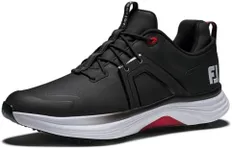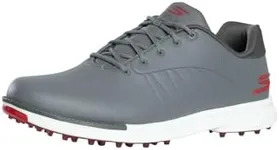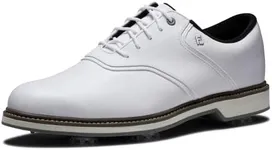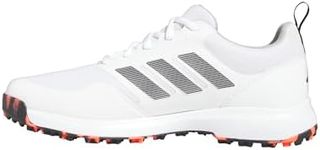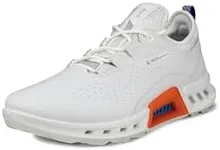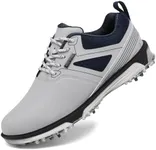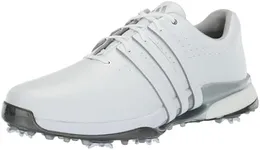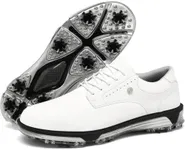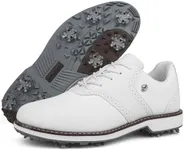Buying Guide for the Best Golf Shoes
Choosing the right golf shoes can greatly improve your comfort, stability, and performance on the course. The perfect pair supports your stance, helps with traction while swinging, and ensures your feet stay comfortable through hours of play. When selecting golf shoes, it’s important to understand the different features and figure out which are most important for your game and how you play.Type (Spiked vs. Spikeless)Golf shoes generally come in two types: spiked and spikeless. Spiked shoes have cleats on the soles for maximum grip, which can help during wet conditions or on hilly courses, while spikeless shoes use tread patterns for traction and offer more comfort for walking. If you play in varied conditions and need strong stability, spiked options are great. If you want lighter, everyday comfort and versatility off the course, spikeless may suit you better.
MaterialGolf shoes are made from leather, synthetic materials, or knit fabrics. Leather offers durability and some natural water resistance, which is great for all-weather play, while synthetics are usually lighter and may breathe better, suitable for warmer days. Knit fabrics focus on lightness and maximum breathability but might be less weather-resistant. Pick based on the typical climate you golf in, and your preference for comfort or durability.
WaterproofingWaterproof golf shoes keep your feet dry in wet grass or rainy weather, making them essential if you play early in the day, during rainy seasons, or on dewy courses. Shoes can range from having basic water resistance to full waterproofing, with the latter ensuring maximum dryness. If you often encounter wet conditions, prioritize higher waterproof ratings or waterproof materials, otherwise you can opt for more breathable versions.
Fit and ComfortFit is crucial since you’ll be walking miles during a round. Look for shoes that provide proper support around the heel and arch, have enough toe room, and feel comfortable out of the box. Some shoes are wider, narrower, or designed for specific foot shapes, so try them on or check the sizing recommendations. If you have foot issues or play long rounds, prioritize cushioned insoles and good arch support.
TractionTraction describes how well the shoe grips the ground during your swing and while walking. Spiked shoes offer the most traction, especially on slippery or uneven terrain, while spikeless models use rubber lugs or dimpled soles for moderate grip. Choose high-traction shoes if you play on hilly or wet courses often; for flatter, dry courses, moderate traction may be enough.
WeightThe weight of golf shoes affects fatigue and comfort during long rounds. Heavier shoes tend to offer more stability, which some players prefer for balance, while lighter shoes are easier on the legs and ideal for walking. If you walk the course often or play multiple rounds a day, lighter shoes might suit you better; if stability and support are your top concerns, a bit more weight is worth considering.
StyleGolf shoes come in sporty, modern designs as well as more classic, traditional looks. This doesn’t impact performance, but the right style can make you feel confident and comfortable. Consider what matches your golf wardrobe and personal taste, as well as any dress codes at your favorite courses.

